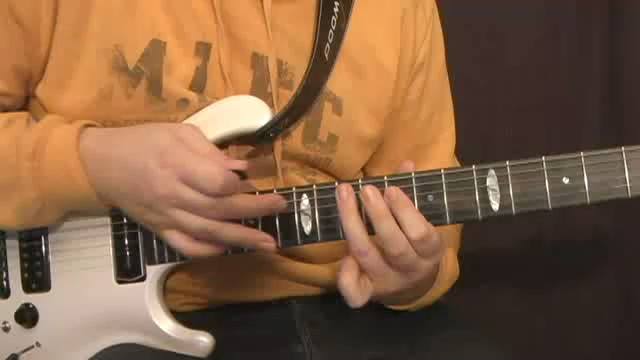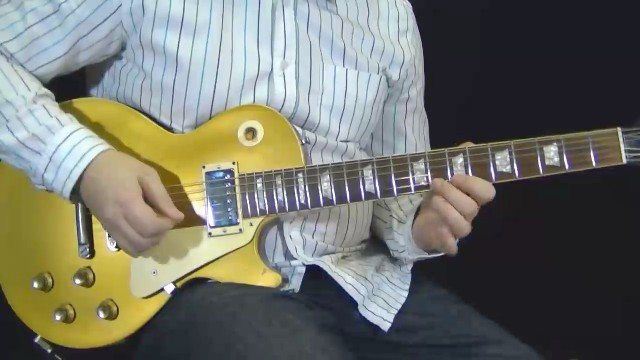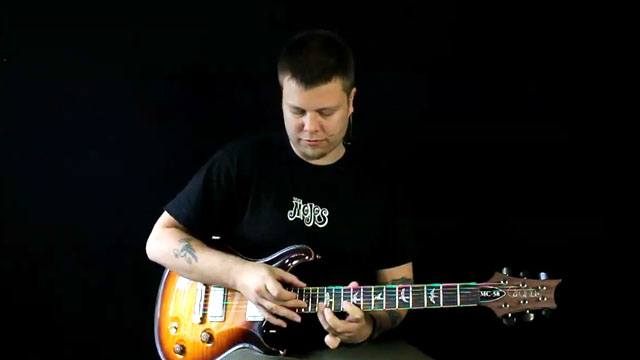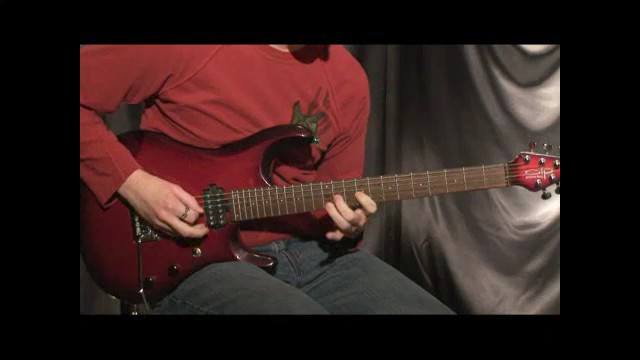In this part we will up the level a bit. Previously we were just doing a uniform descending pattern, which in itself is quite tricky. But now we will start to use a segment that is more broken up and does not follow the scale strictly up and down.
For these examples I’ve chosen the Dm pentatonic scale instead. We begin with a tapping segment in the fourth box with our right hand (check the tab below). It is important that you learn this simply playing it with your right hand, getting the rhythm just right. Having this pattern “sound” in your head will be your anchor in the examples to come.
Now, instead of having our right hand move down the boxes, we will now have our left hand do the moving. Check out example 1 in this part, and you will see that we are using box 2 in our left hand. Now, as you play this example, make sure that you can separate the right hand pattern with your ears, and not just hearing a jumble of notes. Then try to separate the left hand pattern in your head. Go back and forth, shifting your focus between what you let your ear focus on. This way of thinking and listening to the shapes is the key to making this concept work to its full advantage.
Then, in the following two examples, you will use box 1 and 5 in your left hand. You will not encounter the same kind of problem with your left hand “tracking” your right in these examples as you did in the second example of part 1. But you still might “drop the ball” at times, if you let your focus drop too much. These examples should NOT be learned simply as licks, but simply as exercises for an overall concept, which you need to be able to apply regardless of key or scale.


















